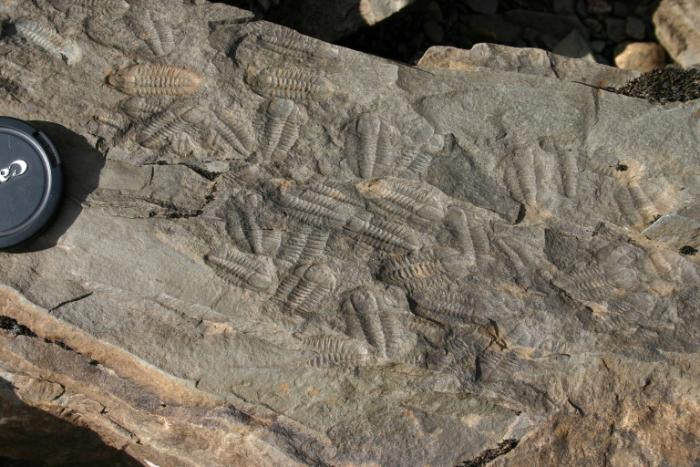Public Lecture: Doug Boyce, "Newfoundland and Labrador: A Trilobite Collecting Paradise"

Fossils are protected in all Federal and Provincial Natural and Historic Sites in the Province, as well as in Parks, Significant Paleontological Sites, and Wilderness and Ecological Reserves. Additionally, all Ediacaran fossils, and all vertebrate fossils are protected. All of the above require scientific research permits. Outside of these areas, collecting is allowed.
The Trilobita — an extinct class of Cambrian to Permian marine arthropods (521–251 m.y.) — are among the most important fossils here, crucial to the understanding of the province’s geological history. Rich Cambrian and Ordovician trilobite faunas of eastern and western Newfoundland contrast sharply with each other; the two areas were in different climatic zones on opposite sides of the Early Paleozoic Iapetus Ocean. Western Newfoundland was located in tropical to equatorial latitudes on the margin of the continent of Laurentia, whereas eastern Newfoundland was located in higher (temperate to polar) latitudes, covered by cooler waters around the continent of Avalonia. Trilobite remains typically are preserved as incomplete, disarticulated molts, or fragments. Complete trilobites represent dead individuals — most common in the Early Cambrian Forteau Formation (southeastern Labrador and western Newfoundland), the Middle Cambrian Penguin Gove Formation near Gallants (western Newfoundland), and the Middle Cambrian Chamberlain’s Brook and Manuels River Formations (eastern Newfoundland). Bell Island is world famous for its Early Ordovician trilobite trace fossils (tracks, trails, and burrows).
Admission by donation. Doors open 6:30pm.
Location: Johnson Geo Centre
Date and Time: Tuesday, Oct. 17 at 07:00 PM - 08:00 PM (NDT)